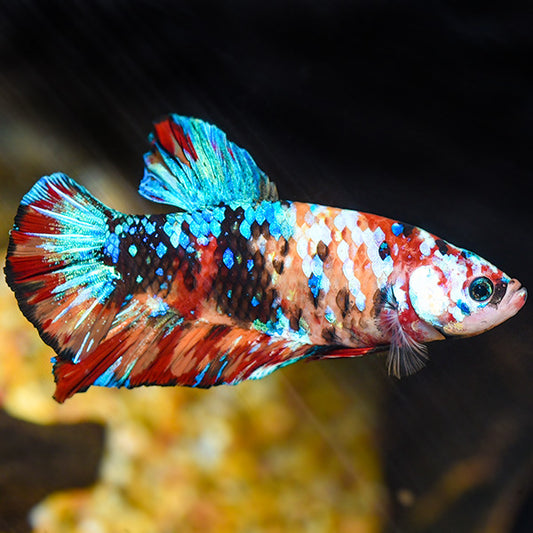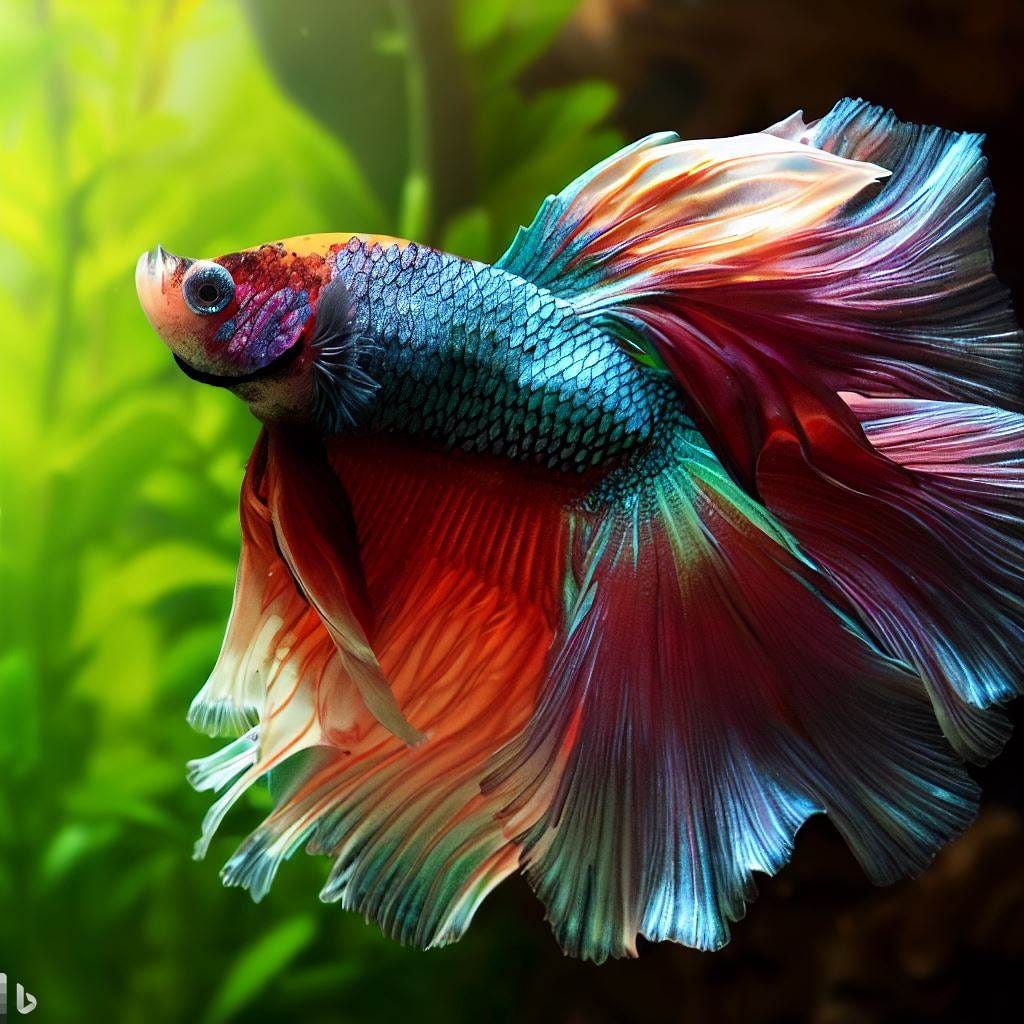Betta Fish Diet: What to Feed Your Betta for Optimal Health And Wellness
Betta Fish Diet: What to Feed Your Betta for Optimal Health And Wellness
Blog Article
Reproducing Betta Fish: a Comprehensive Step-By-Step Overview to Effectively Raising Infant Bettas From Eggs to Their Adult Years
Breeding Betta fish is a meticulous endeavor that calls for cautious preparation and execution to make certain the effective growth of fry from eggs to grow fish. As the male Betta diligently constructs a bubble nest and guards the precious eggs, the succeeding stages of treatment and shift need interest to detail and understanding of best practices.

Selecting Breeding Pairs
When starting the trip of breeding Betta fish, selecting the appropriate breeding pairs is vital to attaining preferable qualities and a healthy lineage - betta fish. The initial step in this process is to determine the details qualities you wish to improve or preserve, such as color, fin kind, and physique. It is necessary to select genetically varied sets to prevent inbreeding, which can bring about wellness issues and unwanted attributes
Evaluate potential reproducing candidates meticulously. A healthy male Betta should display lively shades, an energetic temperament, and well-formed fins, while the female needs to likewise show vivid pigmentation and a rounded belly, showing readiness for spawning. Observing the temperament of both fish is vital, as hostile or overly shy people might not reproduce efficiently.
Maintaining documents of the parent fish's origins can aid you track genetic qualities and possible concerns. Ultimately, spending time in the option procedure will dramatically improve the chance of generating strong, vibrant children that meet your breeding objectives.

Preparing the Breeding Tank
Developing an optimal reproduction environment is an essential action after choosing ideal sets for Betta fish. The breeding container should be specifically made to offer comfort and promote the natural breeding actions of the fish. Start with a tank dimension of a minimum of 10 gallons to guarantee appropriate area for both the man and female Bettas.
Keep a mild filtering system to maintain the water clean while avoiding solid currents that can worry the fish. Furthermore, an air stone can be included to offer oxygenation without disrupting the water surface excessive.
Temperature level regulation is essential; go for a steady series of 78-82 ° F(25-28 ° C) using a reliable heater. The pH level should be preserved between 6.5 and 7.5, and normal water adjustments are needed to guarantee high water high quality.
Include floating plants or spawning mops to produce hiding areas for the female, while additionally urging bubble nest structure by the male - betta fish. Lastly, make sure the container is devoid of sharp decorations and any kind of potential hazards, as the welfare of the fish ought to always be focused on throughout this essential stage of breeding.
The Breeding Process
Usually, the breeding procedure for Betta fish entails More about the author a series of distinctive and observable behaviors that show readiness for recreation. The male Betta starts by building a bubble nest at the water's surface area, which acts as a website for the fed eggs. This nest is important, as it provides a safe environment for the eggs till they hatch out.
Once the nest is established, the man will display courtship habits, such as flaring his fins and displaying vivid shades to draw in the woman. The lady, upon sensing the male's preparedness, will certainly respond by presenting upright stripes along her body, indicating her receptiveness.
When the women techniques, the male participates in a breeding dancing, often resulting in an accept referred to as the "spawning." Throughout this embrace, the lady launches her eggs, why not try here which the male feeds quickly. The fertilized eggs then are up to the bubble nest, where the male thoroughly gathers and returns them to the nest. Following this, the male assumes responsibility for safeguarding the nest and guaranteeing the safety of the eggs until they hatch, normally within 24-36 hours. This phase is essential in the reproducing procedure, laying the structure for effective fry development.
Taking Care Of Betta Fry
Caring for Betta fry needs mindful interest to their atmosphere and nourishment to guarantee healthy growth and development. After hatching, Betta fry are very tiny and at risk, requiring a steady and tidy environment. Maintaining a water temperature level between 78 ° F and 80 ° F is vital, as Betta fry prosper in cozy conditions. Additionally, guarantee that the water is devoid of unsafe toxins; normal water changes of 10-20% are suggested to preserve ideal water high quality.
Feeding Betta fry is just as important. explanation Feed them small quantities numerous times a day, being cautious not to overfeed, which can lead to water high quality problems.
Transitioning to Grownup Bettas
As Betta fry fully grown, transitioning them to grown-up Bettas is a vital phase that requires cautious administration of their environment and social communications. This process normally starts when the fry get to around six weeks old, whereupon they can be slowly introduced to a more structured living atmosphere.
To promote this transition, it is vital to make sure that the water criteria-- such as temperature level, pH, and ammonia degrees-- are optimal and steady. Grown-up Betta fish flourish in cozy water (around 78-80 ° F) with a pH of 6.5 to 7.5. Gradually acclimate the fry to these problems to minimize tension.
Social communications are an additional essential variable; male Bettas are notoriously territorial and hostile. Therefore, it is advisable to separate men into specific containers as they develop. Women Bettas can be housed with each other, but treatment ought to be taken to check for indications of aggression.
Furthermore, dietary adjustments should be made as the fry expand. Incorporate high-quality pellets and live foods to support their growth and health and wellness. By handling these variables efficiently, you can advertise a successful transition to the adult years for your Betta fish.

Verdict
Successful reproduction of Betta fish requires cautious interest to information throughout the whole process, from selecting genetically varied sets to providing optimum treatment for fry. By guaranteeing ideal reproduction conditions and keeping water top quality, the likelihood of healthy and balanced spawn enhances substantially. In addition, a balanced diet plan and progressive adaptation to adult atmospheres are crucial for the development and growth of Betta fish. Following these actions vigilantly promotes a thriving population of Betta fish, improving both their wellness and vigor.
Report this page